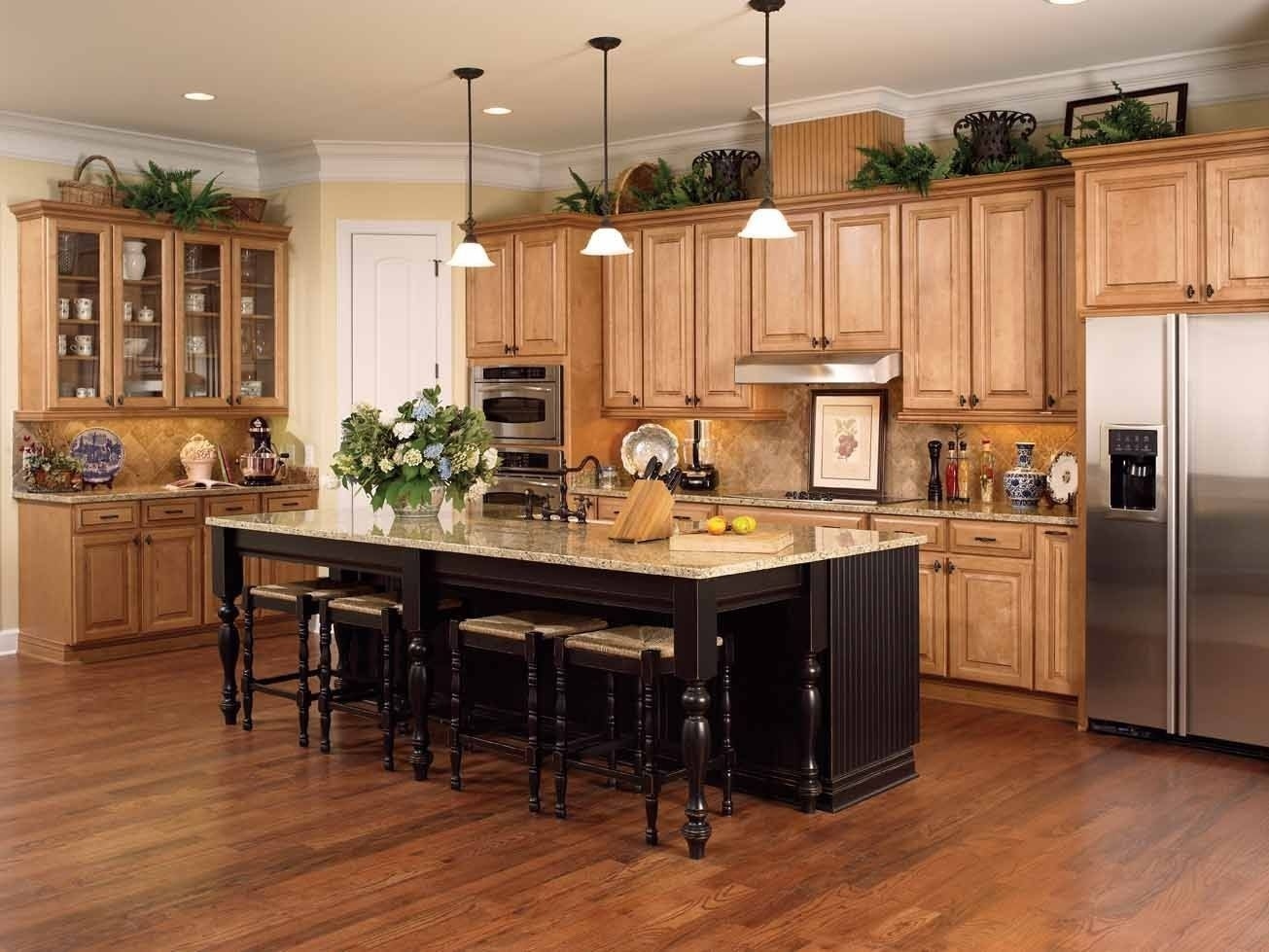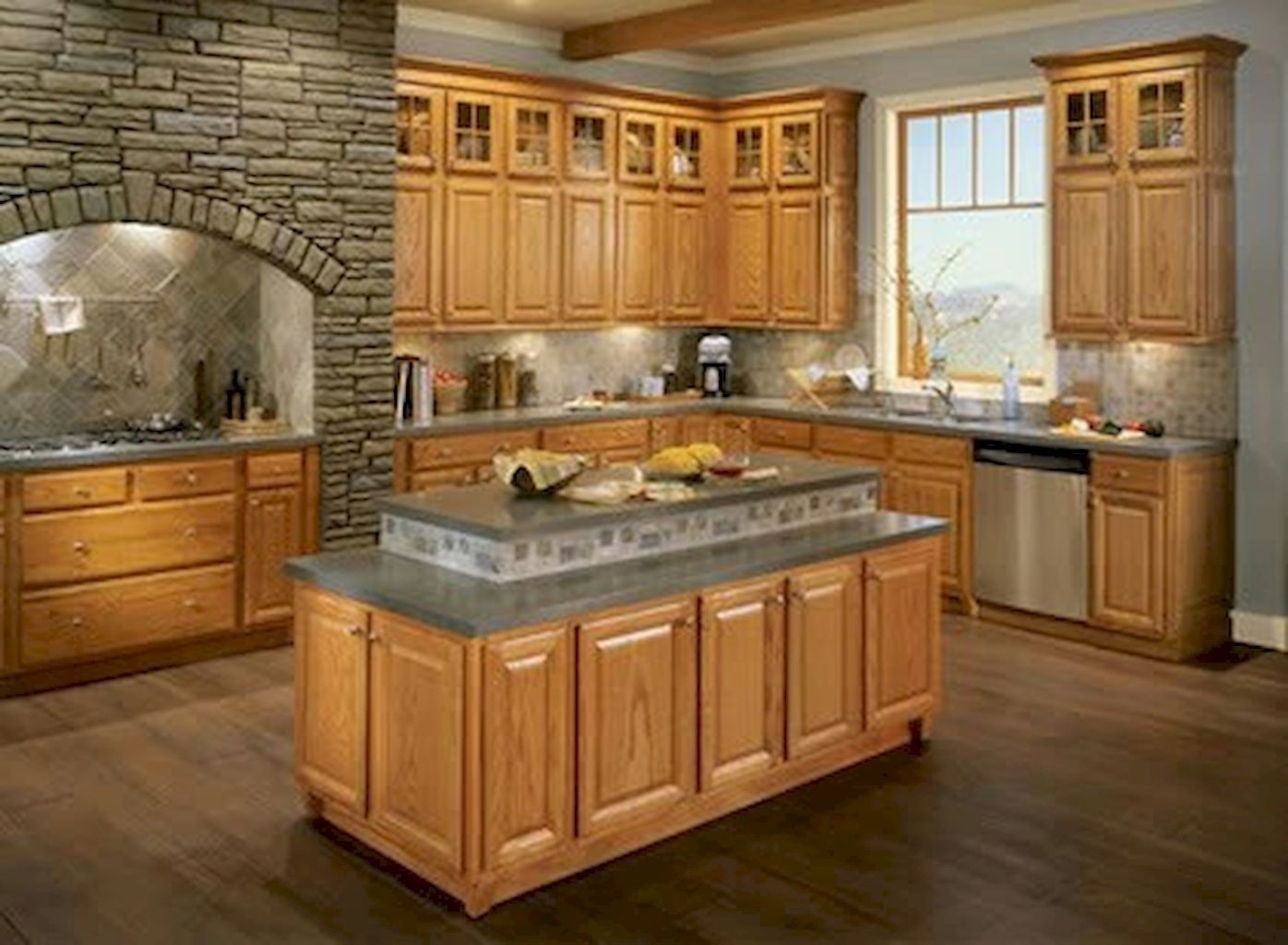Kitchen Cabinet Styles and Trends: Kitchen Cabinets And Flooring

Kitchen cabinets are the heart of any kitchen, playing a vital role in functionality, aesthetics, and overall design. Understanding different cabinet styles and current trends can help you create a kitchen that perfectly reflects your taste and lifestyle.
Popular Kitchen Cabinet Styles
Choosing the right kitchen cabinet style is a crucial step in designing your dream kitchen. Each style offers a unique aesthetic and functionality, influencing the overall ambiance and practicality of the space. Here’s a closer look at some of the most popular styles:
- Shaker: Defined by its simple, clean lines and flat panel doors with a recessed center panel, the Shaker style offers a timeless and versatile aesthetic that complements a wide range of kitchen designs. Its simplicity and functionality make it a popular choice for both traditional and modern kitchens.
- Contemporary: Characterized by sleek, minimalist designs and bold geometric lines, contemporary cabinets often feature frameless construction, integrated handles, and high-gloss finishes. They exude a modern and sophisticated feel, often incorporating innovative materials and finishes.
- Traditional: Traditional cabinets embrace ornate details, intricate carvings, and classic moldings. They often feature raised panel doors, decorative hardware, and rich wood finishes, creating a warm and inviting atmosphere. This style is ideal for kitchens that aim for a classic and timeless elegance.
Current Trends in Kitchen Cabinet Design
Kitchen cabinet design is constantly evolving, reflecting contemporary trends in materials, finishes, and hardware. Here are some of the most prominent trends shaping modern kitchens:
- Two-Tone Cabinets: This trend involves using two contrasting colors or finishes for upper and lower cabinets, creating visual interest and defining the space. For example, a dark lower cabinet with a lighter upper cabinet can add a sense of sophistication and depth to the kitchen.
- Open Shelving: Open shelving is gaining popularity as a way to display decorative items and create a more open and airy feel. It’s often used in conjunction with closed cabinets to provide a balance between storage and visual appeal.
- Integrated Appliances: Seamlessly blending appliances into the cabinet design is becoming increasingly popular. This trend creates a streamlined and modern look, minimizing visual clutter and maximizing efficiency.
- Smart Storage Solutions: As kitchens become increasingly functional, innovative storage solutions are in high demand. Pull-out shelves, spice racks, and hidden compartments maximize space and organization, making kitchens more efficient and user-friendly.
Kitchen Cabinet Layouts and Organization
The layout and organization of kitchen cabinets play a crucial role in functionality and efficiency. Here are some popular layouts and organization solutions:
- U-Shaped Layout: This layout offers ample counter space and storage, creating a highly functional workspace. It’s well-suited for larger kitchens, providing a spacious and efficient work triangle.
- L-Shaped Layout: This layout is versatile and can adapt to different kitchen sizes. It provides a good balance of counter space and storage, creating a comfortable and efficient workspace.
- Galley Kitchen Layout: This layout is ideal for smaller kitchens, maximizing space with parallel cabinets on opposite sides. It offers efficient movement and ample storage in a compact footprint.
Kitchen Flooring Options and Considerations

Choosing the right flooring for your kitchen is crucial, as it significantly impacts the space’s functionality, aesthetics, and longevity. Kitchen floors endure heavy foot traffic, spills, and potential wear and tear, making durability and easy maintenance essential considerations.
Popular Kitchen Flooring Materials
This section delves into the most common flooring options for kitchens, highlighting their pros and cons to help you make an informed decision.
- Hardwood Flooring: Renowned for its timeless elegance and durability, hardwood flooring offers a classic and sophisticated look. However, it’s susceptible to scratches and water damage, requiring regular maintenance and sealing.
- Tile Flooring: Tile, particularly ceramic and porcelain, excels in durability, moisture resistance, and ease of cleaning. It comes in various styles and colors, allowing for creative design possibilities. However, tile can be cold underfoot and may require professional installation.
- Laminate Flooring: Laminate flooring is a cost-effective alternative to hardwood, mimicking its appearance at a fraction of the price. It’s relatively easy to install and maintain. However, it’s not as durable as hardwood and can be susceptible to water damage.
- Vinyl Flooring: Vinyl flooring, including luxury vinyl tile (LVT), is a popular choice for its water resistance, durability, and affordability. It offers a wide range of styles, including wood, stone, and tile imitations.
Factors to Consider When Selecting Kitchen Flooring
Several key factors should be considered when choosing the ideal kitchen flooring:
- Durability: Kitchen floors face constant wear and tear, so choosing a durable material is essential. Consider the level of traffic your kitchen experiences and the potential for spills and scratches.
- Moisture Resistance: Kitchens are prone to spills and splashes, making moisture resistance a crucial factor. Tile, vinyl, and some laminate flooring options offer excellent water resistance.
- Maintenance Requirements: Different flooring materials require varying levels of maintenance. Hardwood floors require regular sealing and cleaning, while tile and vinyl are relatively low-maintenance.
- Style and Aesthetics: Kitchen flooring should complement the overall design and style of the space. Consider the existing cabinetry, countertops, and backsplash when choosing a flooring material and color.
- Cost: Flooring materials vary significantly in cost. Hardwood flooring is typically the most expensive, followed by tile, while laminate and vinyl are more budget-friendly options.
Comparison of Kitchen Flooring Options, Kitchen cabinets and flooring
The following table provides a concise comparison of popular kitchen flooring materials, considering key factors such as cost, durability, maintenance, and aesthetics.
| Flooring Material | Cost | Durability | Maintenance | Aesthetics |
|---|---|---|---|---|
| Hardwood | High | High | Moderate to High | Classic, elegant |
| Tile | Moderate to High | High | Low | Versatile, durable |
| Laminate | Low to Moderate | Moderate | Low | Wide range of styles |
| Vinyl | Low to Moderate | Moderate to High | Low | Versatile, water-resistant |
Design Recommendations for Pairing Flooring with Kitchen Cabinets
- Traditional Kitchen Cabinets: Pair traditional cabinets with classic flooring materials like hardwood or tile in neutral colors like beige, brown, or gray.
- Modern Kitchen Cabinets: Modern cabinets often feature sleek lines and minimalist designs. Consider pairing them with contemporary flooring options like large-format tiles, polished concrete, or engineered wood.
- Contemporary Kitchen Cabinets: Contemporary cabinets often embrace bold colors and textures. Pairing them with patterned tile, vinyl planks, or even bold colored concrete can create a visually striking and modern space.
- Rustic Kitchen Cabinets: Rustic cabinets often feature distressed wood or reclaimed materials. Pairing them with natural stone flooring, reclaimed wood, or even large-format tiles with a rustic finish can enhance the overall aesthetic.
Integrating Kitchen Cabinets and Flooring for a Cohesive Design

A cohesive kitchen design seamlessly blends cabinetry and flooring, creating a visually appealing and harmonious space. Achieving this harmony involves considering color coordination, material compatibility, and the creation of distinct zones within the kitchen.
Color Coordination and Visual Harmony
Color plays a crucial role in creating a unified kitchen design. Matching or complementing cabinet and flooring colors fosters a sense of balance and visual appeal. For example, a kitchen with white cabinets might pair well with light-colored hardwood floors or a warm beige tile. This creates a bright and airy atmosphere. On the other hand, dark cabinets can be complemented by darker flooring, like rich walnut wood or dark grey tile, which adds a touch of sophistication and warmth.
Examples of Color Palettes and Material Combinations
- White Cabinets with Light Hardwood Floors: This classic combination creates a bright and airy kitchen. The light wood floors enhance the feeling of spaciousness, while the white cabinets provide a clean and timeless backdrop.
- Dark Cabinets with Dark Hardwood Floors: This combination creates a sophisticated and cozy atmosphere. The dark wood floors and cabinets create a sense of warmth and intimacy.
- Grey Cabinets with White Tile Floors: This combination is both modern and versatile. The grey cabinets provide a neutral backdrop, while the white tile floors add a touch of brightness and clean lines.
- Beige Cabinets with Travertine Tile Floors: This combination is both elegant and timeless. The beige cabinets blend seamlessly with the travertine tile floors, creating a warm and inviting atmosphere.
Creating Visual Interest and Contrast
While color coordination is important, introducing contrasting elements can add visual interest and depth to your kitchen design. This can be achieved through:
- Contrasting Colors: Using contrasting colors for cabinets and flooring can create a visually striking and dynamic space. For example, pairing dark cabinets with light flooring or vice versa.
- Contrasting Textures: Mixing different textures, such as smooth cabinets with textured flooring, adds visual interest and depth. For instance, pairing sleek, modern cabinets with rustic wood floors.
- Contrasting Patterns: Incorporating patterns, such as a patterned tile floor or a patterned backsplash, can add visual interest and personality to your kitchen design. Choose patterns that complement the overall style of your kitchen.
Defining Kitchen Zones with Flooring and Cabinetry
Flooring and cabinetry can be used to define different zones within the kitchen, creating a sense of order and functionality.
- Cooking Area: Use a durable and easy-to-clean flooring material in the cooking area, such as tile or stone. You can also use a contrasting color or pattern to visually separate the cooking area from other zones.
- Dining Area: Incorporate a different flooring material in the dining area to create a distinct space. Hardwood floors or a patterned rug can add warmth and elegance to the dining area.
- Work Area: Consider using a durable and functional flooring material in the work area, such as tile or laminate. You can also use a contrasting color or pattern to visually define the work area.
Kitchen cabinets and flooring are often the focal points of a kitchen, and their condition can greatly impact the overall aesthetic appeal of the space. While flooring choices are typically made with durability and style in mind, cabinets require a bit more TLC to maintain their shine.
A good kitchen cabinet cleaner and polish can help restore their luster and protect them from everyday wear and tear. By investing in a quality cleaner and polish, you can ensure that your kitchen cabinets remain a highlight of the room, complementing your flooring choices for a cohesive and elegant look.
Kitchen cabinets and flooring are fundamental elements that define the overall aesthetic of a kitchen. While flooring provides the base, cabinets offer storage and contribute to the visual appeal. The choice of cabinet door molding styles can significantly impact the final look.
Molding adds depth and detail, complementing the chosen flooring and enhancing the overall kitchen design. Ultimately, the harmony between cabinets and flooring creates a cohesive and stylish kitchen environment.
